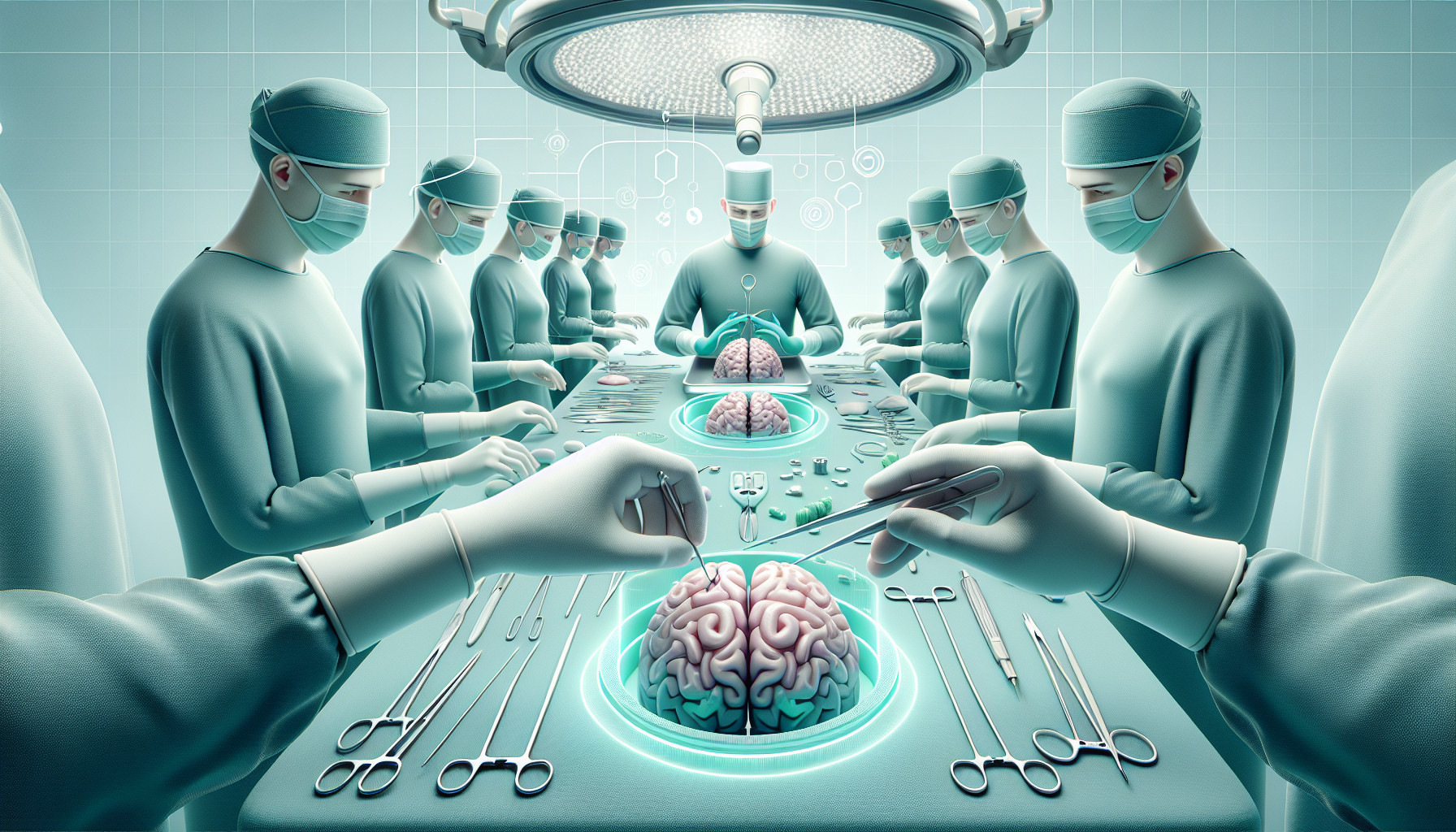Our Summary
This research paper reviews various studies on how the brain processes syntax (the arrangement of words and phrases to create well-formed sentences) during awake brain surgery. The authors found that there’s no standardized method for studying this and there’s limited information about how the brain processes syntax during these procedures. They analyzed 18 studies using two criteria - the tasks and stimuli used during the surgery and the sentence structures assessed in the operation.
They grouped the studies into those that directly studied how the brain processes the structure of words (morphosyntax), those that indirectly studied it, and those that reported some form of syntax deficit. They also looked at whether the studies assessed ’normal’ or ‘unusual’ sentence structures.
The overall finding was that most of the studies focused on morphosyntax rather than pure syntax. The authors concluded that the study of how the brain processes syntax during awake surgery is still in its early stages and needs further, more systematic research.
FAQs
- What is the primary focus of most studies on how the brain processes syntax during awake brain surgery?
- What criteria did the authors use to analyze the studies on brain processing of syntax during awake surgery?
- What was the authors’ conclusion about how the brain processes syntax during awake surgery?
Doctor’s Tip
One helpful tip a doctor might tell a patient about brain surgery is to follow all pre-operative instructions provided by your medical team, including fasting guidelines and medication restrictions. It’s important to inform your doctor of any medications you are currently taking, as well as any allergies or medical conditions you have. Additionally, it’s essential to have a support system in place to help with recovery after the surgery. It’s important to follow all post-operative care instructions, including attending follow-up appointments and participating in any rehabilitation programs recommended by your medical team.
Suitable For
Patients who are typically recommended for brain surgery include those with brain tumors, epilepsy, vascular malformations, traumatic brain injury, and movement disorders such as Parkinson’s disease. The decision to undergo brain surgery is usually made after a thorough evaluation by a multidisciplinary team of healthcare professionals, including neurosurgeons, neurologists, neuroradiologists, and neuropsychologists.
Patients who are considered for awake brain surgery, also known as awake craniotomy, are those with brain tumors located near critical areas of the brain that control language, motor function, or other important cognitive functions. Awake brain surgery allows the surgical team to monitor the patient’s language and cognitive functions in real-time during the procedure, which helps to minimize the risk of post-operative deficits.
Patients who undergo awake brain surgery may have pre-existing language deficits or other cognitive impairments that need to be carefully monitored during the procedure. In some cases, the surgical team may also use mapping techniques, such as direct electrical stimulation of the brain, to identify and preserve critical areas of the brain responsible for language and other cognitive functions.
Overall, the decision to recommend brain surgery, including awake brain surgery, is based on a careful assessment of the patient’s medical history, imaging studies, and functional neuroimaging data. The goal of brain surgery is to safely remove or treat the underlying brain pathology while minimizing the risk of post-operative deficits and preserving the patient’s quality of life.
Timeline
Before brain surgery, a patient typically undergoes a series of tests and evaluations to determine the best course of treatment. This may include imaging scans, neurological exams, and consultations with various specialists. The patient and their healthcare team will discuss the risks and benefits of surgery, as well as any potential alternatives.
During brain surgery, the patient is typically under general anesthesia to ensure they are comfortable and pain-free. However, in some cases, awake brain surgery may be performed to help the surgical team monitor and protect important areas of the brain, such as those responsible for language and movement. During awake brain surgery, the patient may be asked to perform tasks or answer questions to help guide the surgical team.
After brain surgery, the patient will typically spend time recovering in the hospital under close observation. They may experience side effects such as pain, swelling, and changes in cognitive function. Rehabilitation therapy may be recommended to help the patient regain strength, coordination, and cognitive abilities. Follow-up appointments will be scheduled to monitor the patient’s progress and address any concerns.
What to Ask Your Doctor
- How will the surgery affect my language and communication abilities?
- What specific areas of the brain will be operated on and how will this impact my ability to understand and produce language?
- Will I be awake during the surgery, and if so, how will my language abilities be monitored during the procedure?
- What are the potential risks and complications that could affect my language and communication skills post-surgery?
- Will I need speech therapy or other forms of rehabilitation after the surgery to help with any changes in my language abilities?
- What is the likelihood of experiencing syntax deficits or other language impairments as a result of the surgery?
- Are there any specific exercises or strategies I can use to improve my language skills before and after the surgery?
- How soon after the surgery can I expect to see improvements in my language abilities, if there are any deficits?
- Will I have access to a speech-language pathologist or other language specialist to help with my recovery process?
- Are there any specific follow-up appointments or tests that should be scheduled to monitor my language abilities post-surgery?
Reference
Authors: Zanin E, Riva M, Bambini V, Cappa SF, Magrassi L, Moro A. Journal: Neurol Sci. 2017 Sep;38(9):1579-1589. doi: 10.1007/s10072-017-3016-4. Epub 2017 Jun 17. PMID: 28624915
